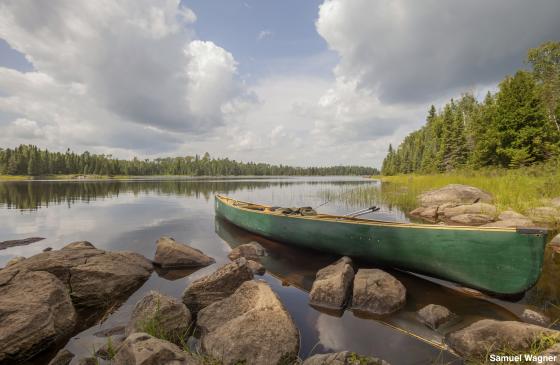A trip to the Boundary Waters is becoming more popular than ever. Between the clean waters, unparalleled seclusion, and teeming wildlife, it isn’t hard to see why so many people are choosing to plan their first Wilderness outing.
If you’re having a hard time with planning, don’t despair! Here are 5 recommendations for your first time in the Boundary Waters.
- Get to know the rules of Boundary Waters camping
Before you get started on your trip, make sure you’ve obtained a permit for entry. Permits are required for Wilderness access and subject to a quota during summer months (May to September). Visit recreation.gov to see up-to-date permit quotas.
To aid Wilderness preservation, Boundary Waters camping is subject to more rules than in more developed areas. No more than 9 people in 4 canoes may gather together, including on the water and at your campsite. Aluminum cans and glass bottles are not allowed, so bring your liquids in reusable plastic or stainless steel containers. Additionally, don’t cut live vegetation and only use firewood that originated in the Boundary Waters. See all of the Forest Service’s rules and regulations here.
- Need help with logistics? Visit an outfitter
Trying to plan your first Wilderness camping trip can be daunting. Luckily, the Boundary Waters supports a wide network of expert outfitters!
Any of these northern Minnesota Boundary Waters Business Coalition members can help with route planning and gear rentals or purchases:
- Bearskin Lodge
- Clearwater Historic Lodge & Canoe Outfitters
- Ely Outfitting Company & Boundary Waters Guide Service
- Hungry Jack Canoe Outfitters
- Lodge of Whispering Pines
- Piragis Northwoods Company
- River Point Outfitting Co.
- Rockwood Lodge and Outfitters
- Sawbill Canoe Outfitters
- Sawtooth Outfitters
- Williams and Hall Outfitters
- Women’s Wilderness Discovery
Paddle Planner is another excellent resource for route planning, and read our blog on packing if you need to double-check your gear.
- Don’t push yourself on your first trip
The urge to dive deep into the interior of the Boundary Waters is real — there aren’t many other places you can experience its solitude. But if this is your first time in the area, it’s best to stick to shorter routes with less portages. If you’re entering from the Gunflint trail, setting up a base camp on Sawbill Lake is a great first trip. An Ely-adjacent option is a combination of Lakes One, Two, and Three. And regardless of where you go, know your limits and focus on enjoying your first Boundary Waters experience.
- Be ready for a different kind of camping experience
The Boundary Waters is one of the country’s most accessible Wilderness areas, but you should still be prepared for what backcountry camping entails. Unlike car camping in a State or National Park, the Boundary Waters’ interior is completely undeveloped. This makes for some of the best night skies and quiet days you’ll ever experience, but it’s also why bringing the right equipment is essential. Remember, an outfitter is your best friend for ensuring you have all the gear for a great Boundary Waters trip!
- Read up on Leave No Trace principles
When the Covid-19 pandemic hit, people from all backgrounds took time to connect with the outdoors more than ever. But as the Boundary Waters grows even more popular, so does the need to practice respect for Wilderness spaces. Before you begin your trip, make sure you know the 7 Leave No Trace principles. Following these guidelines ensures that you enjoy the outdoors without damaging the local ecosystem or disrupting others. In fact, you’ll be asked to check your knowledge of responsible and safe camping practices when you reserve your permit!
Once you take a trip to the Boundary Waters, you’ll likely be hooked. If you want to know how you can safeguard this wild place for your future adventures and generations to come, click below to get involved in the effort to protect America’s most-visited Wilderness. Happy paddling!

